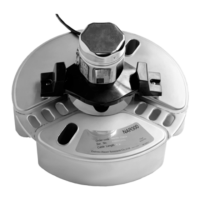Oil Leak Detector NAR 300 system
Endress+Hauser 17
4 Instruction for use
4.1 Detection Sensitivity
Depending on actual condition, watar may sometimes cling to the electrode, even though the sensor
is floating on oil above the water (see figure 3). In such case, oil detection sensitivity may be affected
by 1 to 2 mm. When absolute precision is required we recommend coating the electrode with a
mild detergent in order to keep water from clinging to the electrode.
Water clinging to the electrode
4.2 Water in a pit
Impossible to use on sea water
Float sensor is not designed for using on sea water. There may be the following troubles, when using
it on sea water.
• When Float Sensor is overturned by ocean waves, non-alarm or the alarm delay may occur.
• When the bypass is generated between the conductive sensor and float body by sea salt, alarm
delay may occur.
• Float Sensor is corroded by the sea salt
Particular water in a pit
When using the Float Sensor on particular water such as a solvent blend, it may be corroded and
damaged.
High electrical resistance water in a pit
When using the Float Sensor on high electrical resistance water such as a steam drain or pure water,
an alarm may ring. Eelectric conductivity should be
≥10μS/cm and ≤ 100kΩ⋅cm.
As an example:
Pure water - 1 to 0.1μS/cm (1 to 10MΩ⋅cm)
The water freezing in a pit
When water in the pit freezes , the water in a pit, the alarm may ring (fail safe function). Please
implement countermeasures to prevent freezing.
Water
Oil
Conductivity
Tuning-fork
5 Installation

